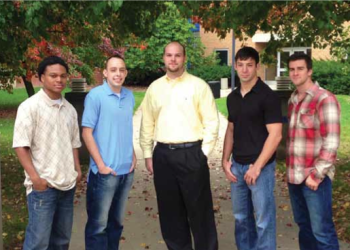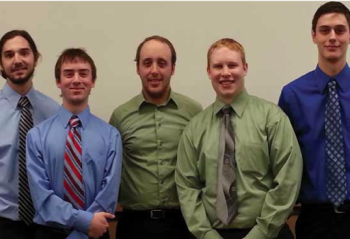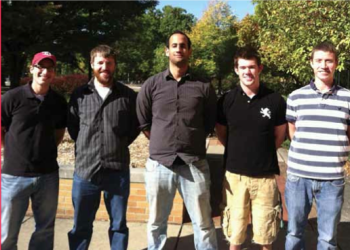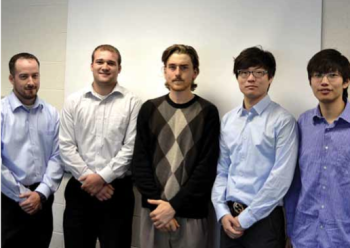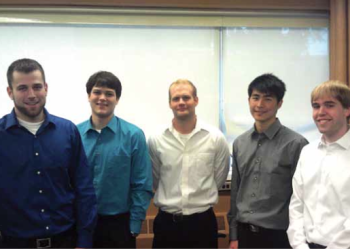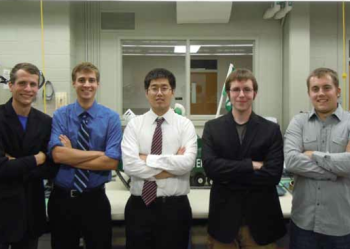Electrical Engineering
Projects
Electrical and Computer Engineering ECE 480 Senior Design is required of all electrical and computer engineering majors at MSU.
For information on becoming a project sponsor, please contact Gregg Motter.
The following are the project sponsors and projects for the fall of 2012:
Air Force Research Laboratory: Equipment Rack Active Cooling System
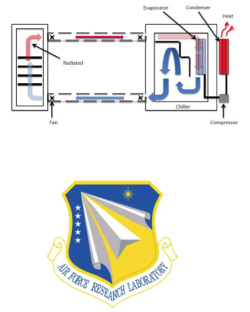 The United States Air Force has tasked our team to design a cooling system that effectively and efficiently reduces the ambient temperature of an enclosure that houses critical electronic equipment. The Air Force’s electronic equipment is deployed in a range of missions that support military, civilian, and humanitarian endeavors. The design of the cooling system must have the capability to have full functionality in high temperature and humid areas that have the potential to exceed 125°F.
The United States Air Force has tasked our team to design a cooling system that effectively and efficiently reduces the ambient temperature of an enclosure that houses critical electronic equipment. The Air Force’s electronic equipment is deployed in a range of missions that support military, civilian, and humanitarian endeavors. The design of the cooling system must have the capability to have full functionality in high temperature and humid areas that have the potential to exceed 125°F.
Our capstone project design utilizes the concept of liquid cooling to successfully dissipate 2000 watts of heat produced by the electrical equipment. Our design has efficiently regulated the temperature of the E.R.A.C.S. between the design specification range of 59°F-113°F. For versatility, the cooling system has the ability to acquire power from three different sources; 12 VDC, 24 VDC, and 110 VAC. To avoid any latent threats that may contaminate the electronic equipment or surrounding environment, the cooling system is air tight and does not permit any exchange to the exterior air in the surrounding environment.
Our design is composed of a cooling system enclosure that is connected by insulated tubing to the electronic equipment enclosure. Fans are located inside the tubing to create a minimum flow rate to circulate cold air into the electronic enclosure and hot air into the cooling system thus essentially recycling the air throughout the system.
Air Force Research Laboratory: Human Electromagnetic Scattering Simulator
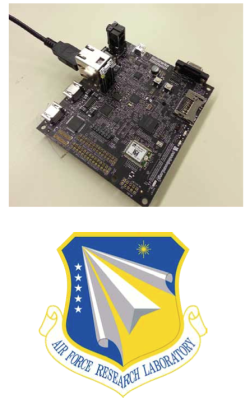 The Air Force Research Laboratory (AFRL) has sponsored our team to develop a system to quickly and automatically capture human movement. The Air Force currently uses software packages to model electromagnetic scattering, which is an important component of radar technologies. These technologies have been developed for a variety of scenarios, including military reconnaissance as well as search and rescue missions. However, these packages currently require the manual input of human parameters such as arm, length, and torso size to accurately model human movement. The AFRL has asked us to collect the information required by these software platforms automatically.
The Air Force Research Laboratory (AFRL) has sponsored our team to develop a system to quickly and automatically capture human movement. The Air Force currently uses software packages to model electromagnetic scattering, which is an important component of radar technologies. These technologies have been developed for a variety of scenarios, including military reconnaissance as well as search and rescue missions. However, these packages currently require the manual input of human parameters such as arm, length, and torso size to accurately model human movement. The AFRL has asked us to collect the information required by these software platforms automatically.
We have accomplished this goal by using a ASUS Xtion in combination with a PandaBoard ES microcomputer inside of a custom enclosure. The ASUS Xtion is able to detect when a human has entered its field of vision, and the connected microcomputer can then process this data. The final design is able to communicate with an external computer over a network and can send this data to an application that initializes AFRL provided software.
Resource Center for Person with Disabilities: Haptic User Interface
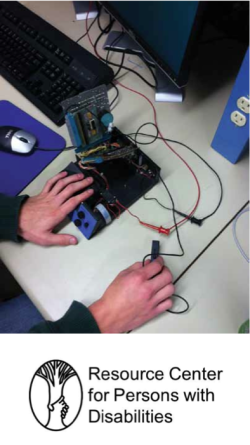 Currently visually impaired students like Jordyn, an engineering student on campus, have many methods and devices to aid in reading textbooks and navigating through computer windows in order to do homework and other assignments. However, one thing is missing for these students, a way to experience and feel images. This is essential when trying to perform homework that has graphs or other visual aids. There are products on the market that help users perform this task, such as printing embossers, pin displays, force feedback mice and several other options. Unfortunately, these products tend to fall short in at least one or two categories; they are either too costly, or they are inefficient. Devices like pin displays or embossers can cost upwards of $10,000, and some of the devices on the market require the creation of a hard copy embossed image that must be stored and used only one time. Another example of inefficient devices are force feedback mice which have steep learning curves. For the above reasons, our group designed a refreshable haptic user interface. This is a device that induces a touch sensation, thus allowing the user to “feel” text or an image.
Currently visually impaired students like Jordyn, an engineering student on campus, have many methods and devices to aid in reading textbooks and navigating through computer windows in order to do homework and other assignments. However, one thing is missing for these students, a way to experience and feel images. This is essential when trying to perform homework that has graphs or other visual aids. There are products on the market that help users perform this task, such as printing embossers, pin displays, force feedback mice and several other options. Unfortunately, these products tend to fall short in at least one or two categories; they are either too costly, or they are inefficient. Devices like pin displays or embossers can cost upwards of $10,000, and some of the devices on the market require the creation of a hard copy embossed image that must be stored and used only one time. Another example of inefficient devices are force feedback mice which have steep learning curves. For the above reasons, our group designed a refreshable haptic user interface. This is a device that induces a touch sensation, thus allowing the user to “feel” text or an image.
After speaking with Jordyn, Mr. Blosser with RCPD, and other visually impaired students on campus, our design team decided the best method for accomplishing the refreshable haptic user interface was to use a matrix of pins constructed from miniature solenoids. These are much more cost effective than braille cells and graphic displays. Additionally, in-house design and fabrication of the solenoids further reduced the cost and allowed the group to optimize the size of the solenoids to fit the project’s specific needs. Upon fabrication of the pins, a microcontroller was used to communicate with the computer and send the signal that raises the appropriate pins. The microcontroller determines which pins to raise by utilizing a computer program our group created which uploads an image, converts it to black and white, and raises the appropriate pins on our display which correspond to black pixels on the computer image. This process allows the end user to select an image which results in an almost immediate display of the image on our display pins. Overall, the group managed to provide an easy to use product which is comparable to the expensive devices currently on the market today.
Resource Center for Person with Disabilities: Branden’s Detented Joystick
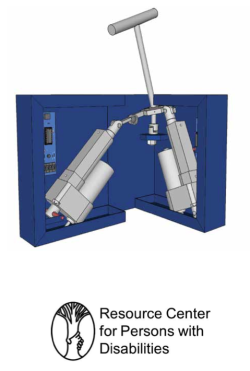 Every year in the United States, approximately 10,000 infants are diagnosed with Cerebral Palsy (CP), a group of disorders affecting brain and nervous system functions. There are several types of CP with varying levels of symptoms, ranging anywhere from abnormal muscle contractions and loss of coordination to partial paralysis and loss of speech capabilities. While most people living with CP are able to process information efficiently, they may not have the motor skills necessary to communicate their ideas with others. It is therefore a necessity that they have assistive technology that can form a medium of communication for them.
Every year in the United States, approximately 10,000 infants are diagnosed with Cerebral Palsy (CP), a group of disorders affecting brain and nervous system functions. There are several types of CP with varying levels of symptoms, ranging anywhere from abnormal muscle contractions and loss of coordination to partial paralysis and loss of speech capabilities. While most people living with CP are able to process information efficiently, they may not have the motor skills necessary to communicate their ideas with others. It is therefore a necessity that they have assistive technology that can form a medium of communication for them.
Our Team was tasked with designing a joystick to function as an electronic device interface for individuals living with Cerebral Palsy(CP).We have developed a programmable joystick that provides local support at designated positions, valuable in controlling the involuntary muscle spasms common to those with CP. The number of positions and the strength of the stabilizing mechanism can be selected by the user through a computer interface to meet the specific needs of different CP cases. With this new design, people living with CP will now have a more efficient means of communication that is tailored to fit their specific abilities.
ArcelorMittal S.A.: Load Metering and Transmission
 ArcelorMittal’s steel operations at its facility in Burns Harbor, IN routinely require up to 100 megawatts (MW) of power usage. Due to the cost of buying electrical power and the company’s limited generating capabilities, having knowledge of the total electrical power needs throughout the facility at any time is vital to economic operation.
ArcelorMittal’s steel operations at its facility in Burns Harbor, IN routinely require up to 100 megawatts (MW) of power usage. Due to the cost of buying electrical power and the company’s limited generating capabilities, having knowledge of the total electrical power needs throughout the facility at any time is vital to economic operation.
To monitor the facility power usage ArcelorMittal has power meters measuring the power usage at each individual building throughout its facility which provide a 0 to 100 millivolt (mV) analog signal representing the measured power usage. The information from the power meters at each building then needs to be transmitted a distance of up to one mile to the facility Central Control Room where the signals are converted to a 1 to 5 volt analog signal which is read by Programmable Logic Controllers (PLC) and converted back to a value of power usage.
The problem for the team was to develop a reliable and accurate method of transmitting a power signal from the power meters at each building to the Central Control Room. The teams design solution was to use Pulse Width Modulation (PWM) as a method of signal transmission along a twisted-pair transmission line. The design consists of PWM modulator which serves as the encoder and PWM demodulator which serves as the decoder. PWM was chosen due to the ability of a PWM signal to hold the integrity of the transmitted information regardless of possible loss along the transmission line and its ability to be implemented well within a $500 project budget.
Texas Instruments: Electrocardiograph Demonstration Board
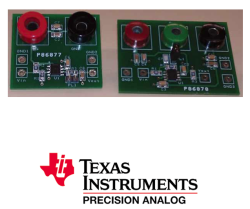 Electrocardiograph (ECG) boards are commonly used in ECG machines, also known as EKG machines, to analyze electrical signals produced by the heart. They are found in research labs and hospitals where they are used to research effects of drugs and medical devices on the heart, as well as monitor the health of patients. Even with how widely used ECG boards are, Texas Instruments (TI) has found an increase in client demand for ECG technology. To demonstrate the supremacy of their chips in ECG applications, TI tasked Design Team 6 with creating a new demonstration board capable of enhancing customer interest in Texas Instrument’s products.
Electrocardiograph (ECG) boards are commonly used in ECG machines, also known as EKG machines, to analyze electrical signals produced by the heart. They are found in research labs and hospitals where they are used to research effects of drugs and medical devices on the heart, as well as monitor the health of patients. Even with how widely used ECG boards are, Texas Instruments (TI) has found an increase in client demand for ECG technology. To demonstrate the supremacy of their chips in ECG applications, TI tasked Design Team 6 with creating a new demonstration board capable of enhancing customer interest in Texas Instrument’s products.
Design Team 6 designed, fabricated, assembled and enhanced an ECG demonstration board for Texas Instruments. The board features current TI chips, such as the INA333, in addition to quality, efficient routing designed to TI standards. This board is capable of receiving input from a human source, processing the received data and displaying the resulting information on an LCD screen in a user friendly manner. This ECG board can be used to drive customer interest in TI chips and engineering solutions pertaining to electrocardiograph technology.
Instrumented Sensor Technology Inc.: User Settable G-Switch
 Vibrations and vigorous movement can be very damaging to commercial and industrial machines. These changes in acceleration are scientifically called g-force. A common example of a damaging event is when a washing machine becomes heavily unbalanced. If unbalanced for a long period of time, serious damage can occur.
Vibrations and vigorous movement can be very damaging to commercial and industrial machines. These changes in acceleration are scientifically called g-force. A common example of a damaging event is when a washing machine becomes heavily unbalanced. If unbalanced for a long period of time, serious damage can occur.
Our G-Switch design would be able to read the G-levels occurring in real time, trip a relay, and ultimately cut power to the machine before this damage becomes permanent. The main components of the G-Switch consist of an accelerometer, connected to a programmable microprocessor, which is then outputted to two relays. The accelerometer’s main task is to be able to sense the present G-level and send digital signals to the microprocessor. The microprocessor then compares that digital signal from the accelerometer to the binary information from a 4 pin DIP Switch and decides whether to trip the relays.
The DIP switch gives the user the ability to select between 8 peak or 8 RMS G-level trip settings giving them the freedom and flexibility of multiple settings. Our final design of the G-Switch offers a low-cost and portable safety precaution from excessive G-levels for many different types of machinery.
MSU Technologies: GUIMoo: GUI for Moo RFID Sensor Platforms
 The Advanced Integrated Microsystems (AIM) Laboratory at Michigan State University is researching methods to develop a system that will allow autonomous monitoring of the health of infrastructures (such as transportation systems, government and commercial facilities) in order to more efficiently assign maintenance priorities. One method being researched is the implementation of Moo WISPs, low-power microcontrollers that use Radio Frequency Identification (RFID) signals as a power source and communication medium, into common foundation materials, such as concrete. These Moo WISPs are then used to record long-term infrastructure health measurements and wirelessly transmit the data to a user friendly program during queries. Antennas and readers are used to read in and transmit data from the sensors to a user interface (UI) on a computer. Design team 8 was assigned to develop a UI that can be used to display the location of a Moo WISP, with respect to the antennas, and the data stored in it.
The Advanced Integrated Microsystems (AIM) Laboratory at Michigan State University is researching methods to develop a system that will allow autonomous monitoring of the health of infrastructures (such as transportation systems, government and commercial facilities) in order to more efficiently assign maintenance priorities. One method being researched is the implementation of Moo WISPs, low-power microcontrollers that use Radio Frequency Identification (RFID) signals as a power source and communication medium, into common foundation materials, such as concrete. These Moo WISPs are then used to record long-term infrastructure health measurements and wirelessly transmit the data to a user friendly program during queries. Antennas and readers are used to read in and transmit data from the sensors to a user interface (UI) on a computer. Design team 8 was assigned to develop a UI that can be used to display the location of a Moo WISP, with respect to the antennas, and the data stored in it.
The team developed a web-based graphical user interface (GUI), named GUIMoo, to display the distance and orientation of Moo RFIDs with respect to the antennas connected to the readers. GUIMoo stands for Graphical User Interface for Moo. It uses three-dimensional (3D) technology to display the orientation and distance of the Moo RFIDs, as well as the information stored in them.
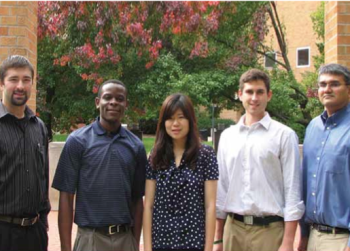
Team Members (L to R): Erik Butterfield, Tabula Mbala-Nkanga, Menglin Li, Samuel Richter, Daniel Perez
Texas Instruments: Robotic Transportation Vehicle
 Team 9 has been assigned a project from Texas Instruments involving the assembly and design of a communication network that interfaces between a radio frequency controller, a central processor, two microcontrollers, and two motors. The device will be used to control a robotic transportation vehicle for Texas Instruments’ Motor Instrumentation Lab.
Team 9 has been assigned a project from Texas Instruments involving the assembly and design of a communication network that interfaces between a radio frequency controller, a central processor, two microcontrollers, and two motors. The device will be used to control a robotic transportation vehicle for Texas Instruments’ Motor Instrumentation Lab.
The wireless network is composed of hardware and software supplied by Texas Instruments. The device is battery powered and is built on a 4-wheeled platform with electric brushless DC motors driving 2 of the 4 platform wheels. These motors are controlled by the two programmable microcontrollers embedded in the device. The Central Processor code development was done using the IDE CodeComposerStudio version (CCS.v5) with the C programming language, while the motor function controls were programmed using the IDE ControlSuite. In order to wirelessly control the signal input and output of the device interface, Team 9 used the RF function of a Chronos watch. This enables a user to send a signal to the central processor that communicates to the microcontrollers thus allowing manual direction and speed control.
